CH07 - Learning (U3.7/3.8/3.9)
1/50
There's no tags or description
Looks like no tags are added yet.
Name | Mastery | Learn | Test | Matching | Spaced |
|---|
No study sessions yet.
51 Terms
acquisition
The initial stage of learning when a response is first established and gradually strengthened. For example, in classical conditioning, a dog begins to salivate when hearing a bell before receiving food.
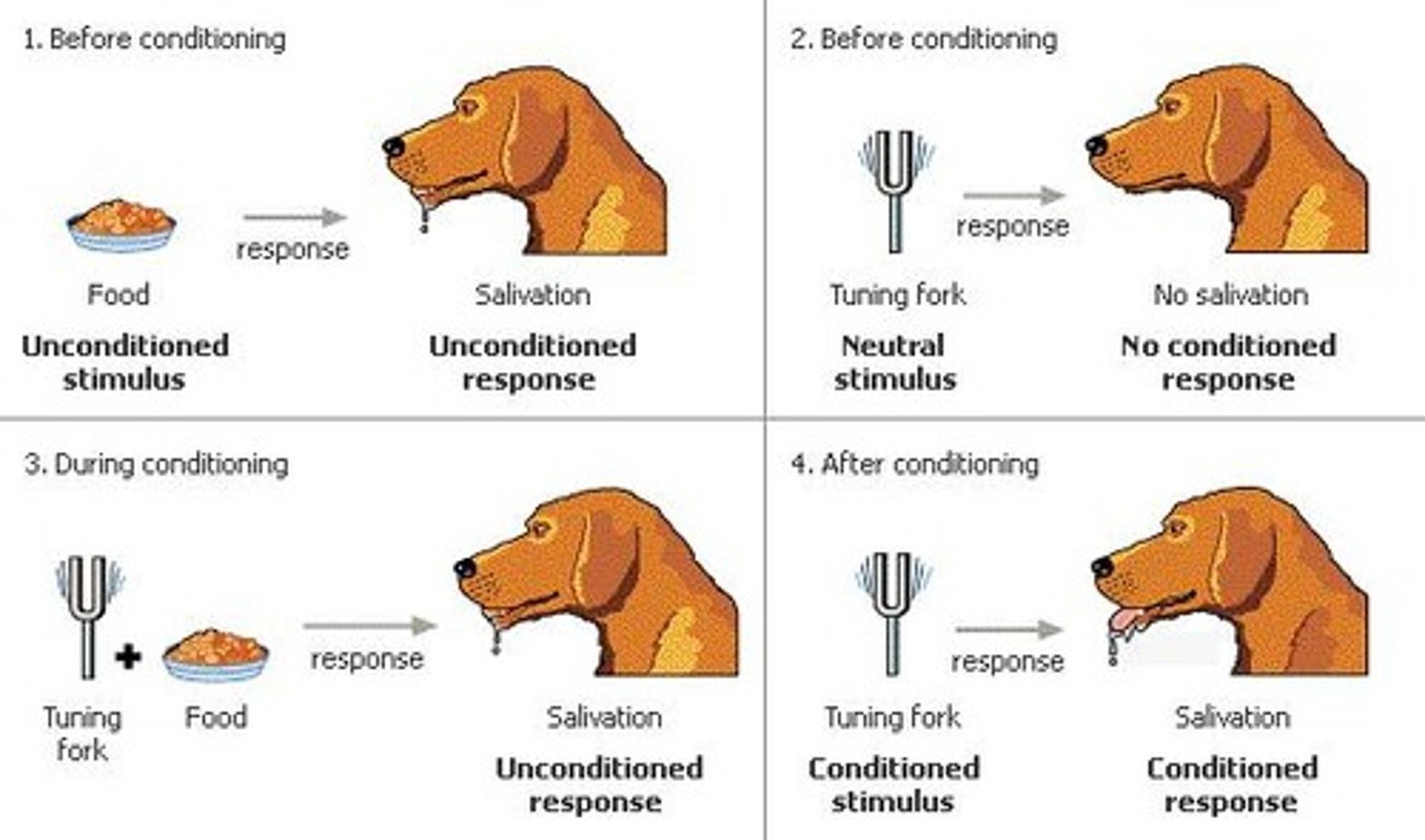
Biological preparedness (to learn)
The idea that people and animals are inherently inclined to form associations between certain stimuli and responses. For instance, humans are more likely to develop phobias of snakes or spiders than of neutral objects like flowers.
classical conditioning
A learning process that occurs when two stimuli are repeatedly paired; a response that is at first elicited by the second stimulus is eventually elicited by the first stimulus alone. For example, Pavlov's dogs salivated in response to a bell after it was repeatedly paired with food.
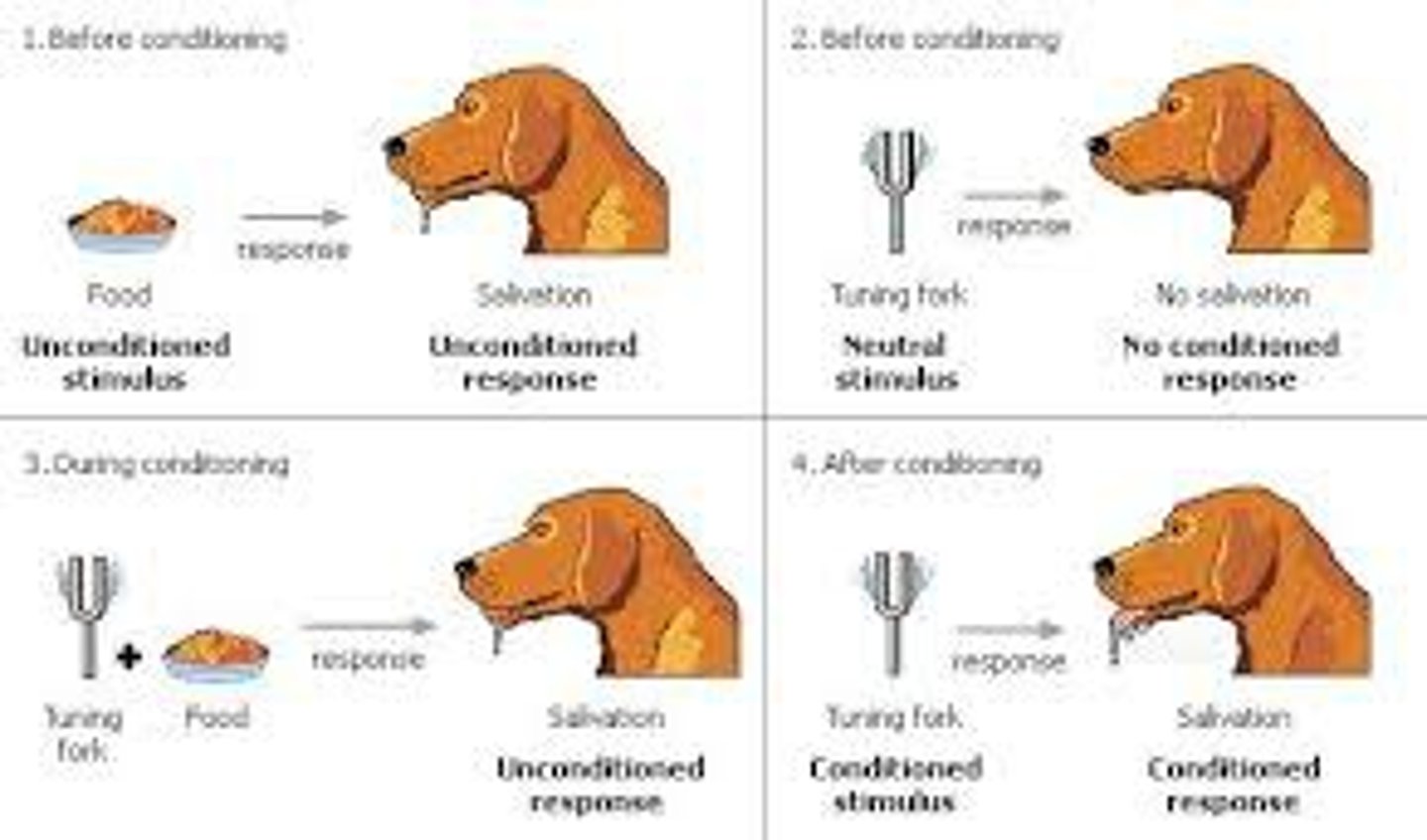
conditioned response (CR)
The learned response to a previously neutral stimulus that has become conditioned. For example, salivating when hearing a bell after it has been associated with food.
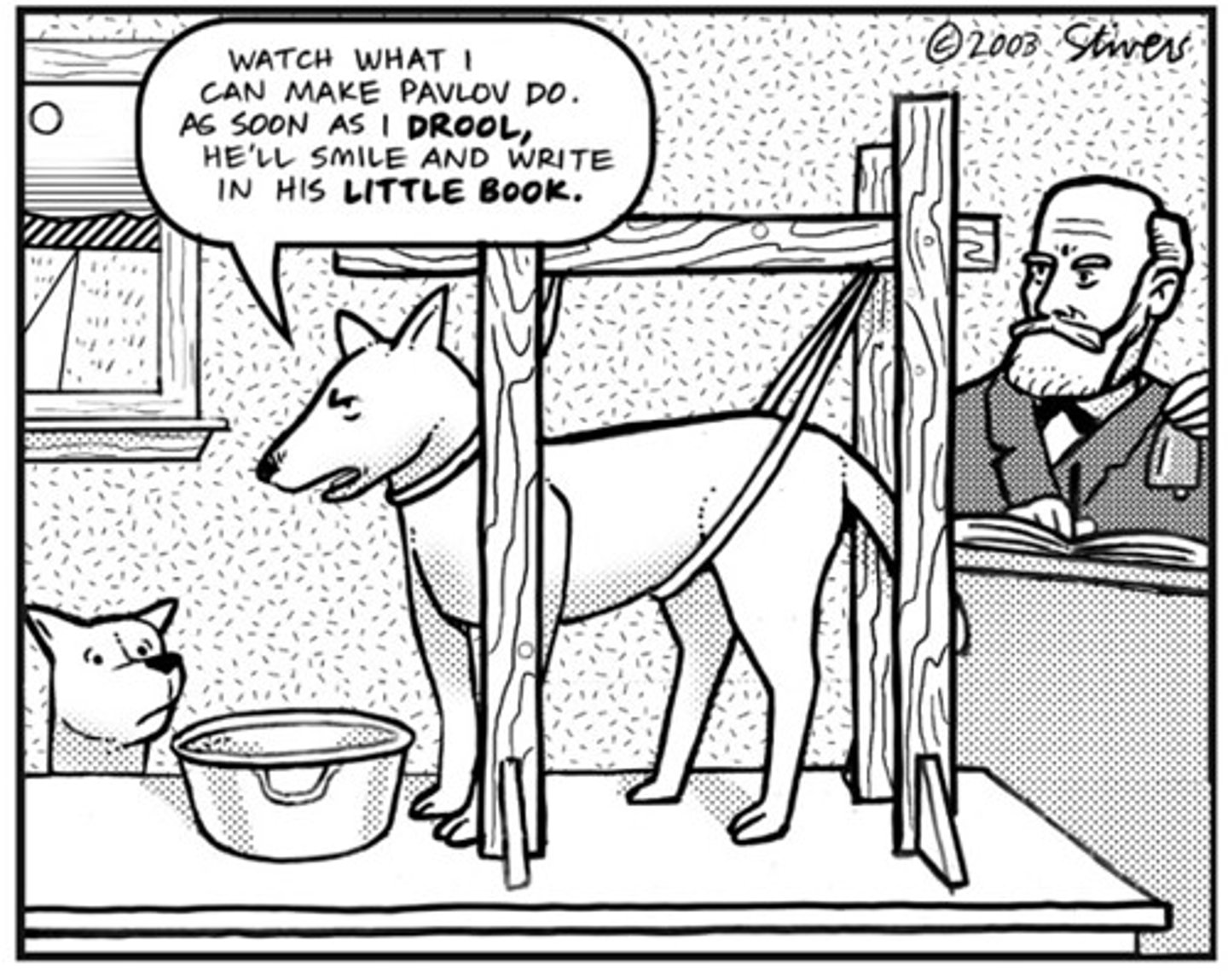
conditioned stimulus (CS)
A previously neutral stimulus that, after association with an unconditioned stimulus, comes to trigger a conditioned response. For example, the bell in Pavlov's experiment that triggers salivation.

discrimination (classical conditioning)
In classical conditioning, the learned ability to distinguish between a conditioned stimulus and other stimuli that do not signal an unconditioned stimulus. For example, a dog may learn to salivate only to the sound of a specific bell, not to other similar sounds.

Extinction (classical conditioning)
The diminishing of a conditioned response when the unconditioned stimulus no longer follows the conditioned stimulus. For example, a dog stops salivating to the sound of a bell if it is no longer followed by food.
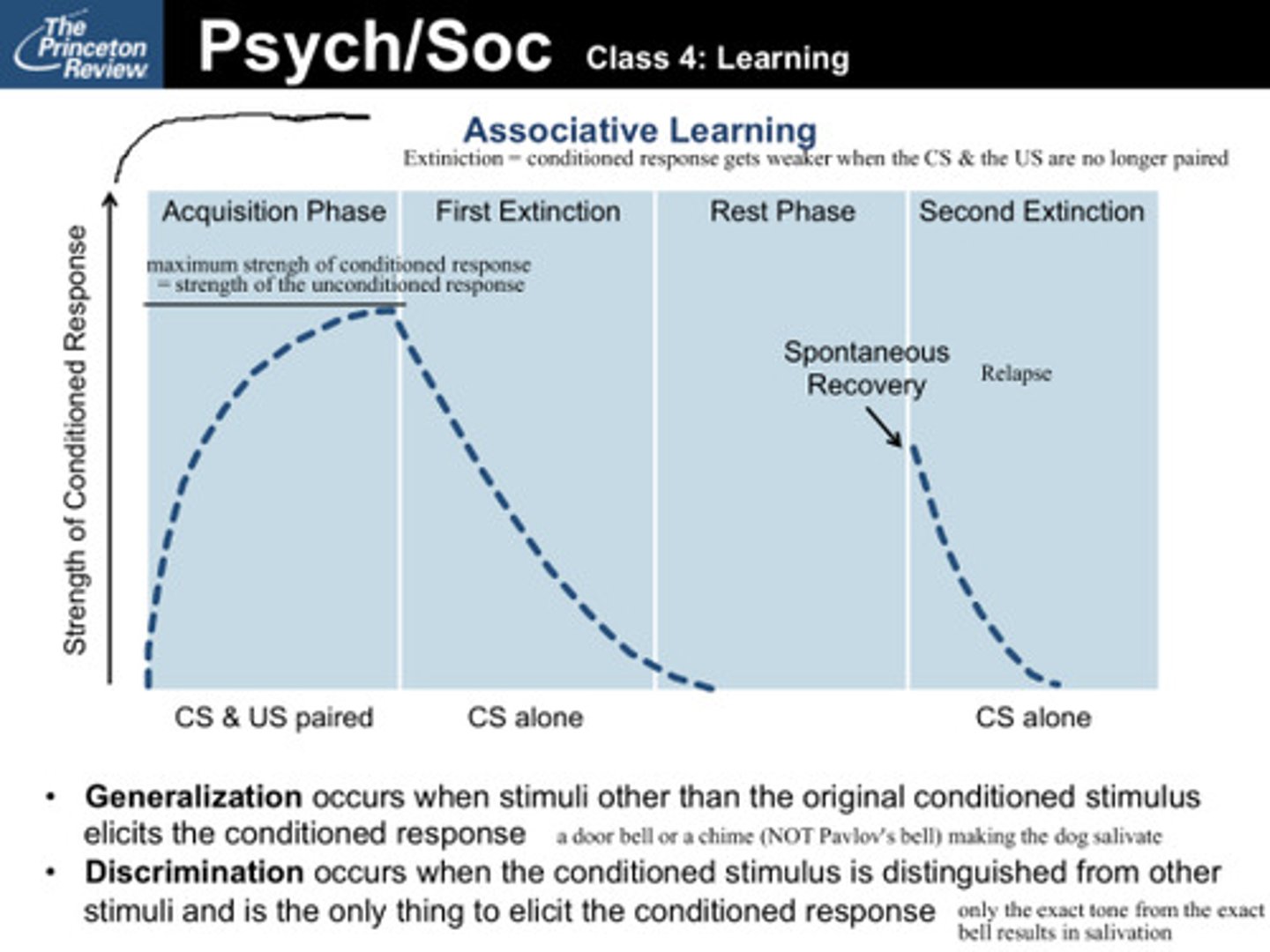
generalization (classical conditioning)
The tendency to respond in the same way to different but similar stimuli. For example, a dog conditioned to salivate to a tone may also salivate to a different tone that is similar.
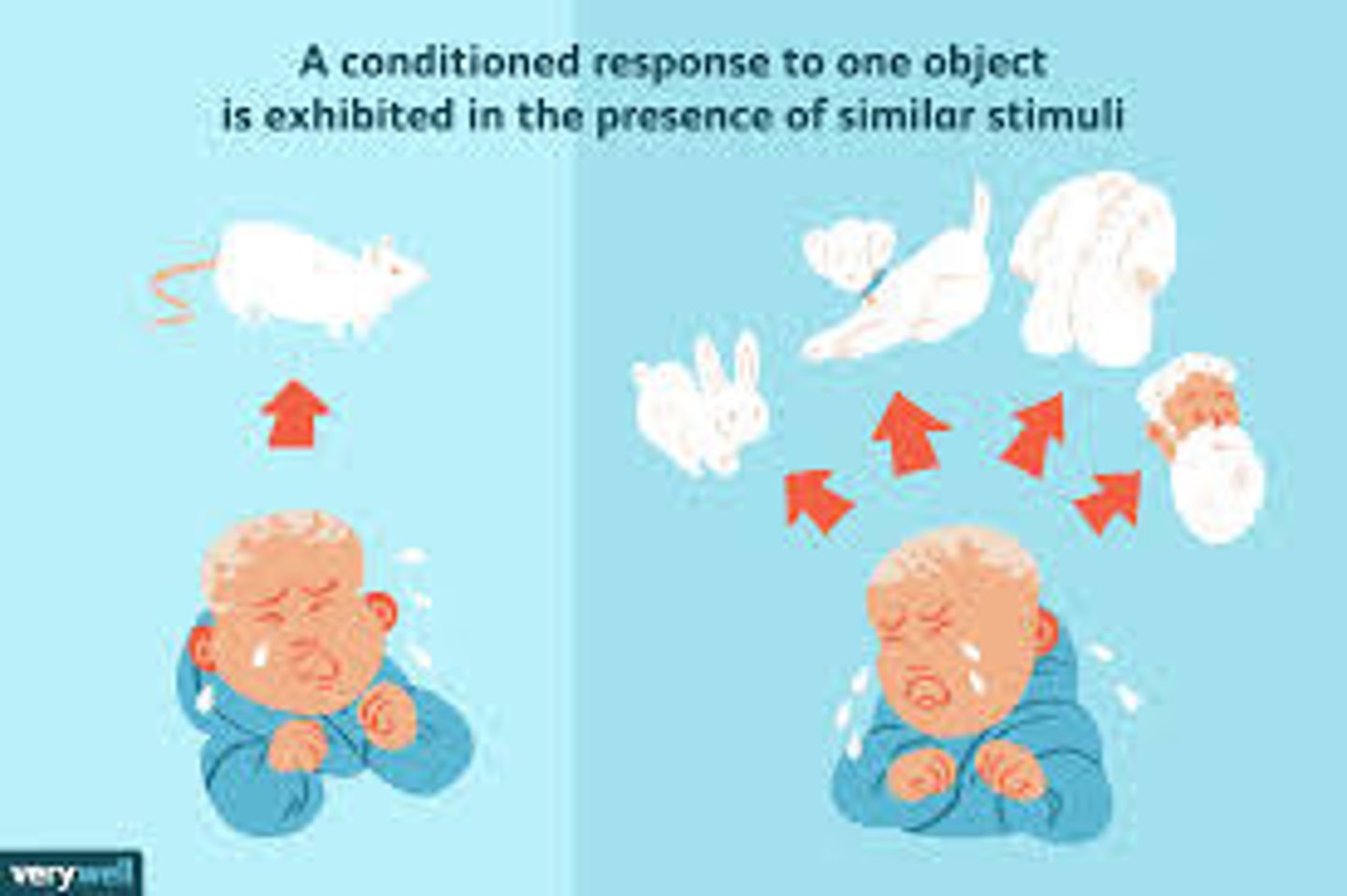
Habituation
Decreasing responsiveness with repeated exposure to a stimulus. For example, a person living near a train track may stop noticing the sound of trains after a while.

higher-order conditioning (second-order conditioning)
A procedure in which a conditioned stimulus in one conditioning experience is paired with a new neutral stimulus, creating a second conditioned stimulus. For example, if a bell associated with food is then paired with a light, the light alone may eventually trigger salivation.

spontaneous recovery (classical conditioning)
The reappearance, after a pause, of an extinguished conditioned response. For example, a dog's conditioned response to a bell might reappear after the behavior has been extinguished and a rest period has occurred.

stimulus discrimination (in classical conditioning)
The ability to distinguish between similar but different stimuli. For example, a dog that is conditioned to respond to a specific tone may not respond to other tones.

stimulus generalization (classical conditioning)
The tendency for stimuli similar to the conditioned stimulus to evoke similar responses. For example, a dog conditioned to salivate to a tone might also salivate to a different tone.

taste aversion
A learned avoidance of a particular food after it has been associated with an unpleasant experience, such as nausea. For example, if you get sick after eating a certain type of food, you might avoid that food in the future.
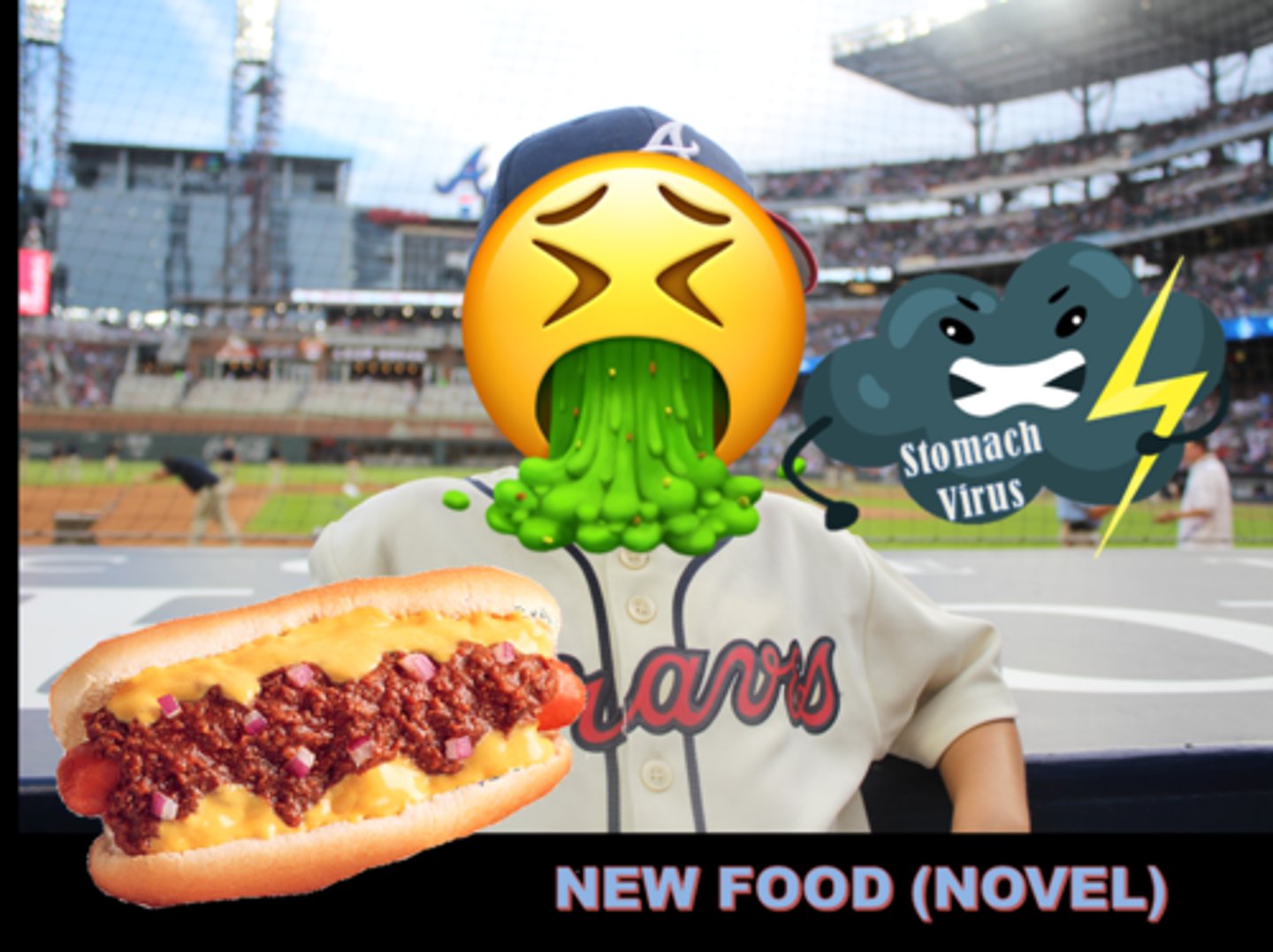
Unconditioned Response (UCR)
The unlearned, naturally occurring response to the unconditioned stimulus. For example, salivating when food is in the mouth.

Unconditioned Stimulus (UCS)
A stimulus that unconditionally, naturally, and automatically triggers a response. For example, food in the mouth automatically triggers salivation.

aversive conditioning
A type of conditioning where a behavior is paired with an unpleasant stimulus to reduce the frequency of that behavior. For example, applying a bitter-tasting substance to a child's thumb to prevent thumb-sucking.

behavior modification
The use of operant conditioning techniques to bring about desired changes in behavior. For example, a teacher may use a token economy to encourage good behavior in students.

continuous reinforcement
A reinforcement schedule in which a reward follows every correct response. For example, giving a dog a treat every time it sits on command.
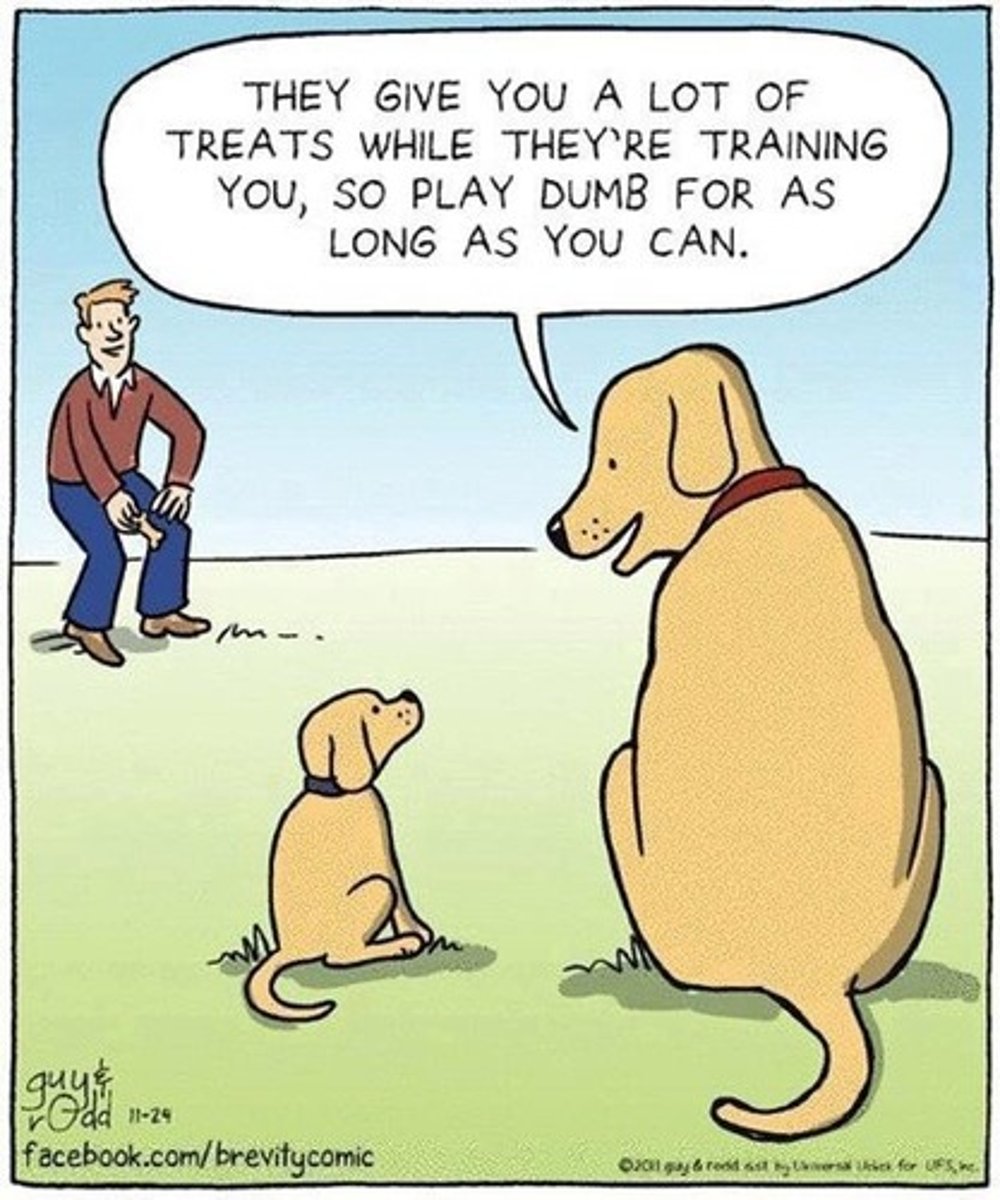
discriminative stimulus
In operant conditioning, a stimulus that signals whether a certain response will be reinforced. For example, a green light signals that pressing a lever will result in food, whereas a red light does not.
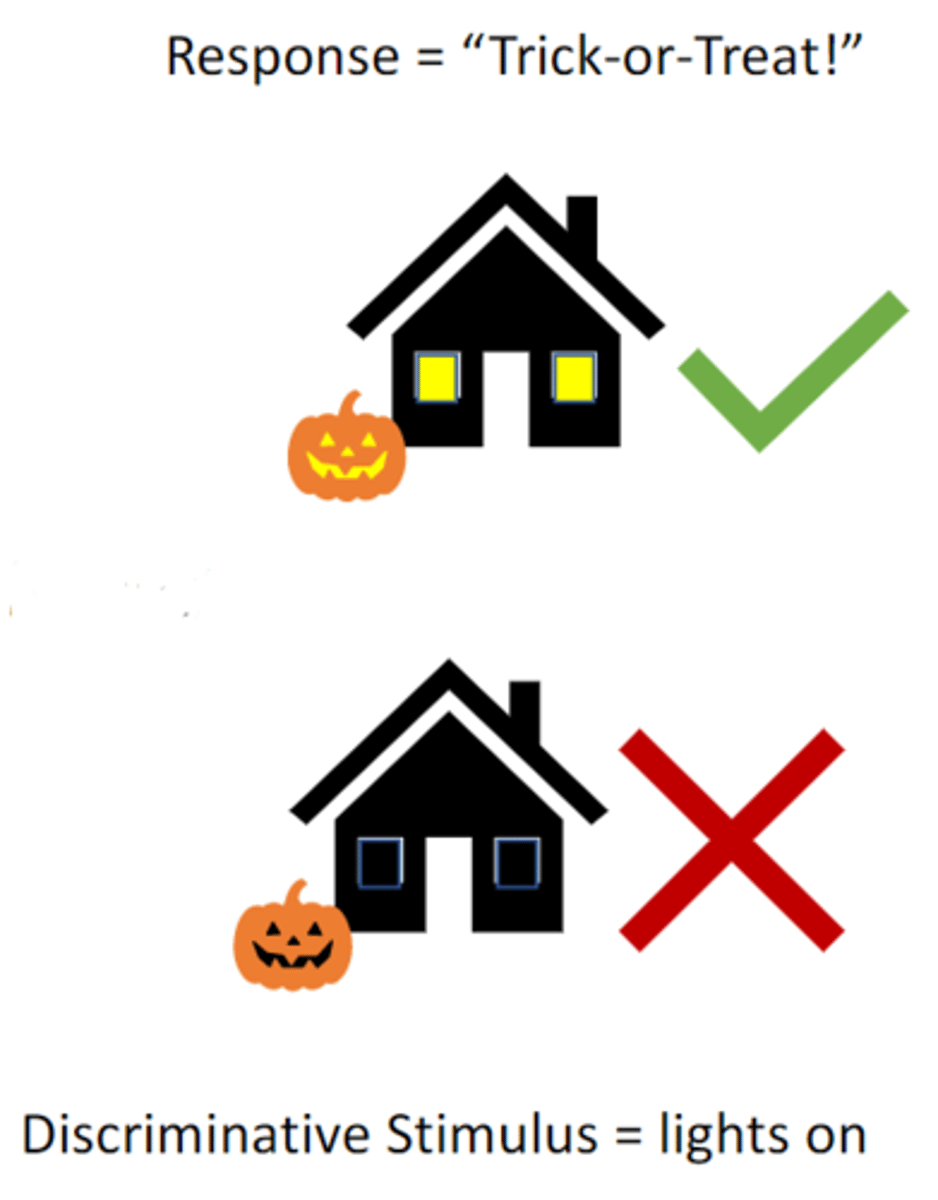
Extinction (operant conditioning)
The reduction of a learned behavior when it is no longer reinforced. For example, a child may stop throwing tantrums if they no longer result in getting what they want.

fixed ratio schedule of reinforcement
A reinforcement schedule that rewards a response only after a specified number of responses. For example, a salesperson receives a bonus after selling five products.
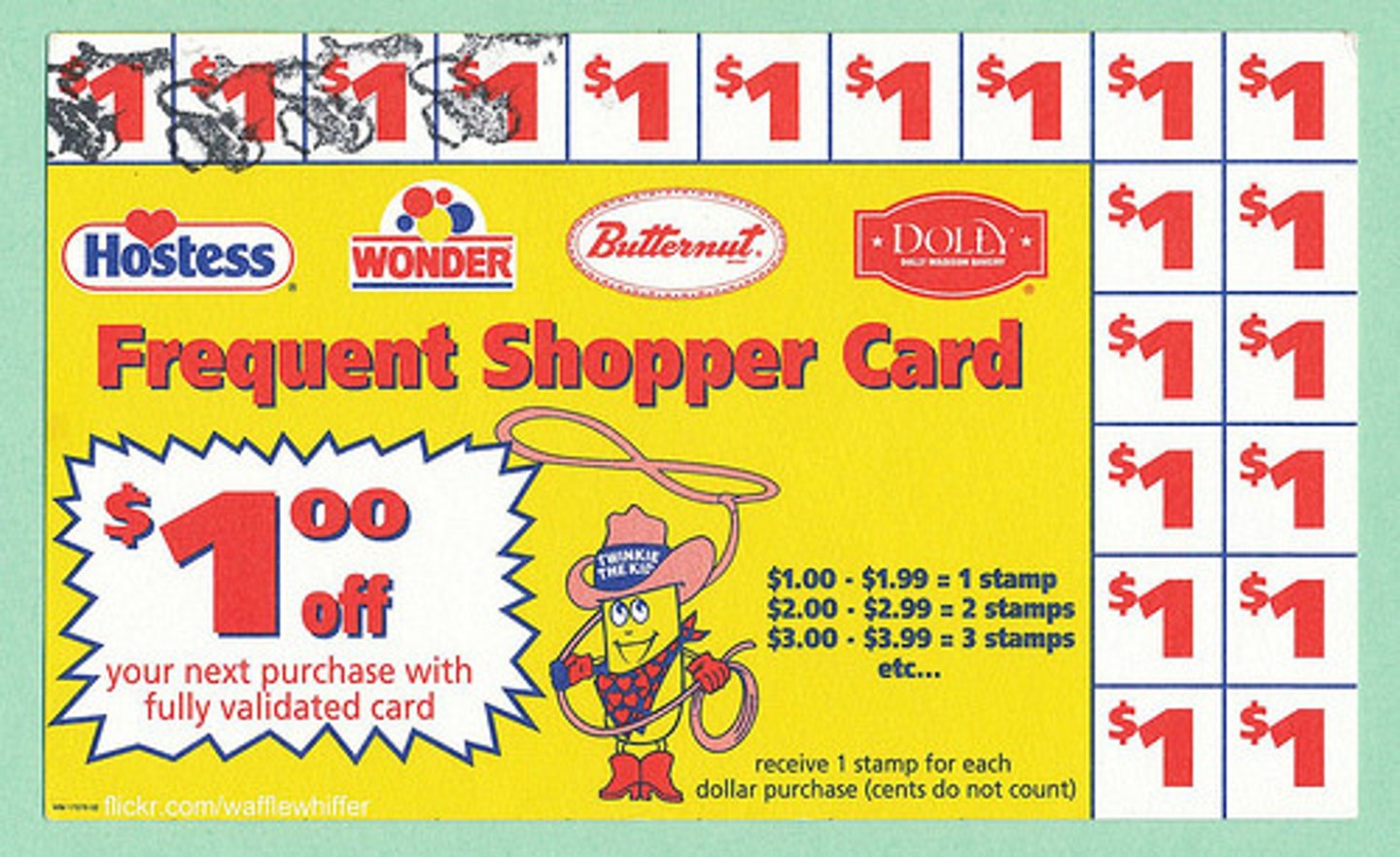
fixed-interval schedule
A reinforcement schedule that rewards a response only after a specified time has elapsed. For example, a worker receives a paycheck every two weeks.
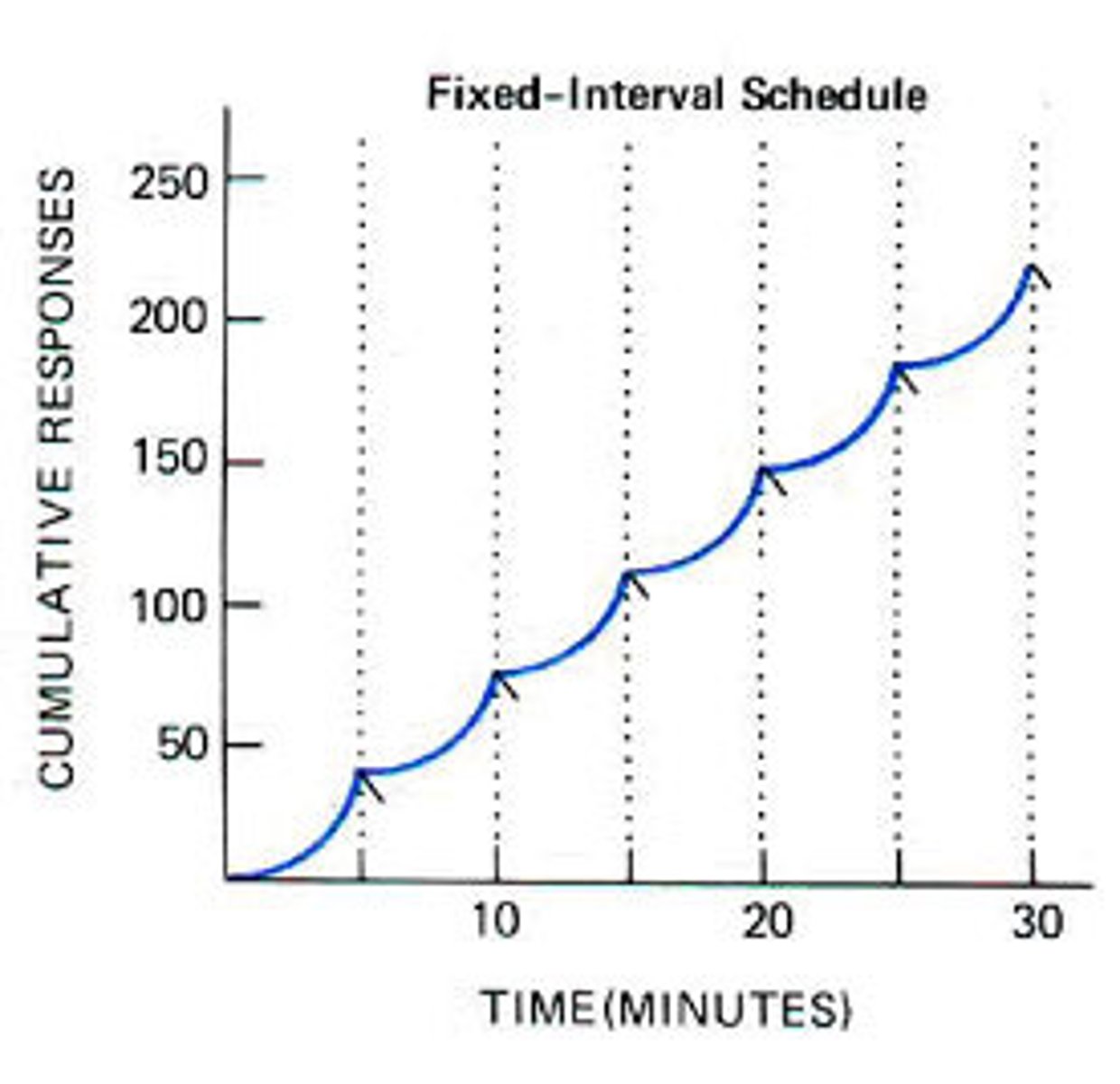
instinctive drift
The tendency of an animal to revert to instinctive behaviors that interfere with a conditioned response. For example, a raccoon trained to deposit coins into a container may start rubbing the coins together as if they were food, a behavior that is instinctual for raccoons when handling food.
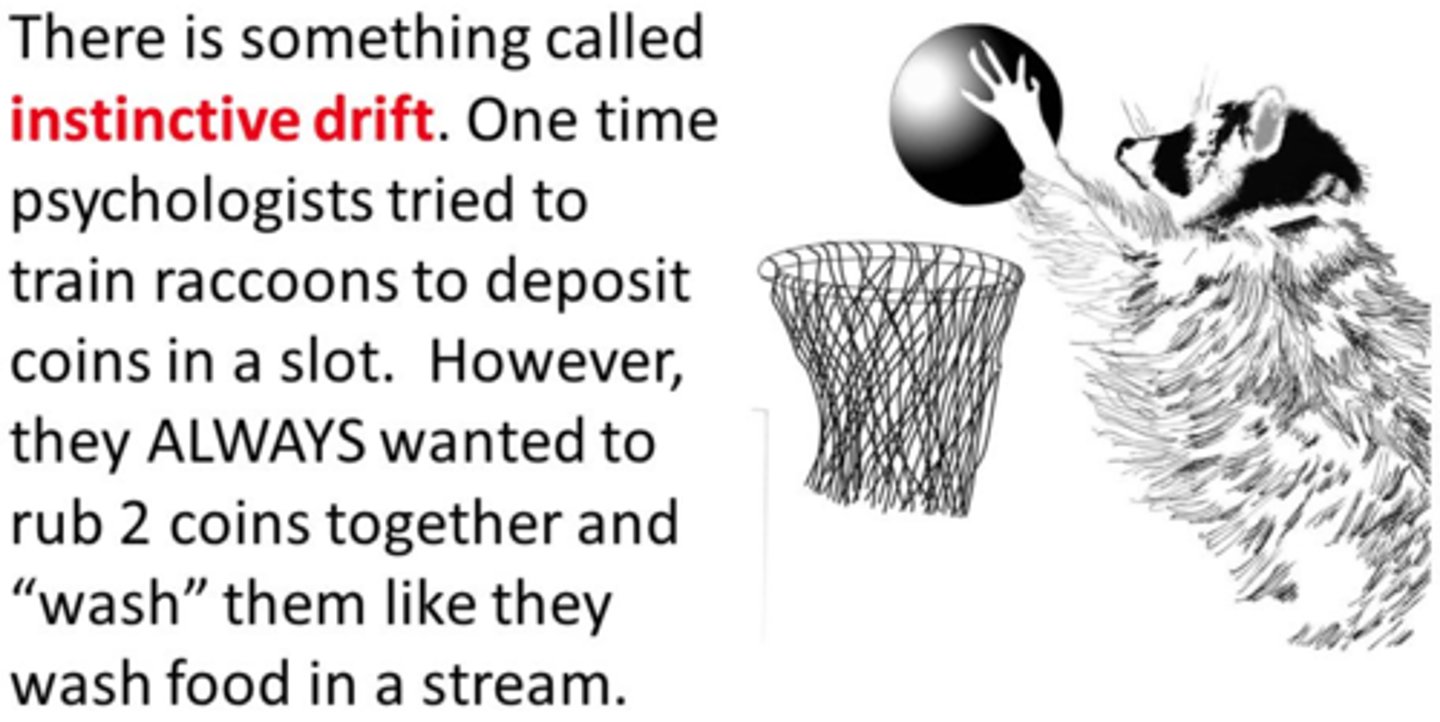
Law of Effect (Thorndike)
Thorndike's principle that behaviors followed by favorable consequences are more likely to recur, and behaviors followed by unfavorable consequences are less likely. For example, a cat learns to escape from a puzzle box faster over time because it receives food as a reward.

learned helplessness
The hopelessness and passive resignation an animal or human learns when unable to avoid repeated aversive events. For example, dogs subjected to inescapable shocks eventually stop trying to escape even when escape is possible.

negative punishment
The removal of a stimulus to decrease the probability of a behavior's recurring. For example, taking away a child's video game privileges to reduce their misbehavior.
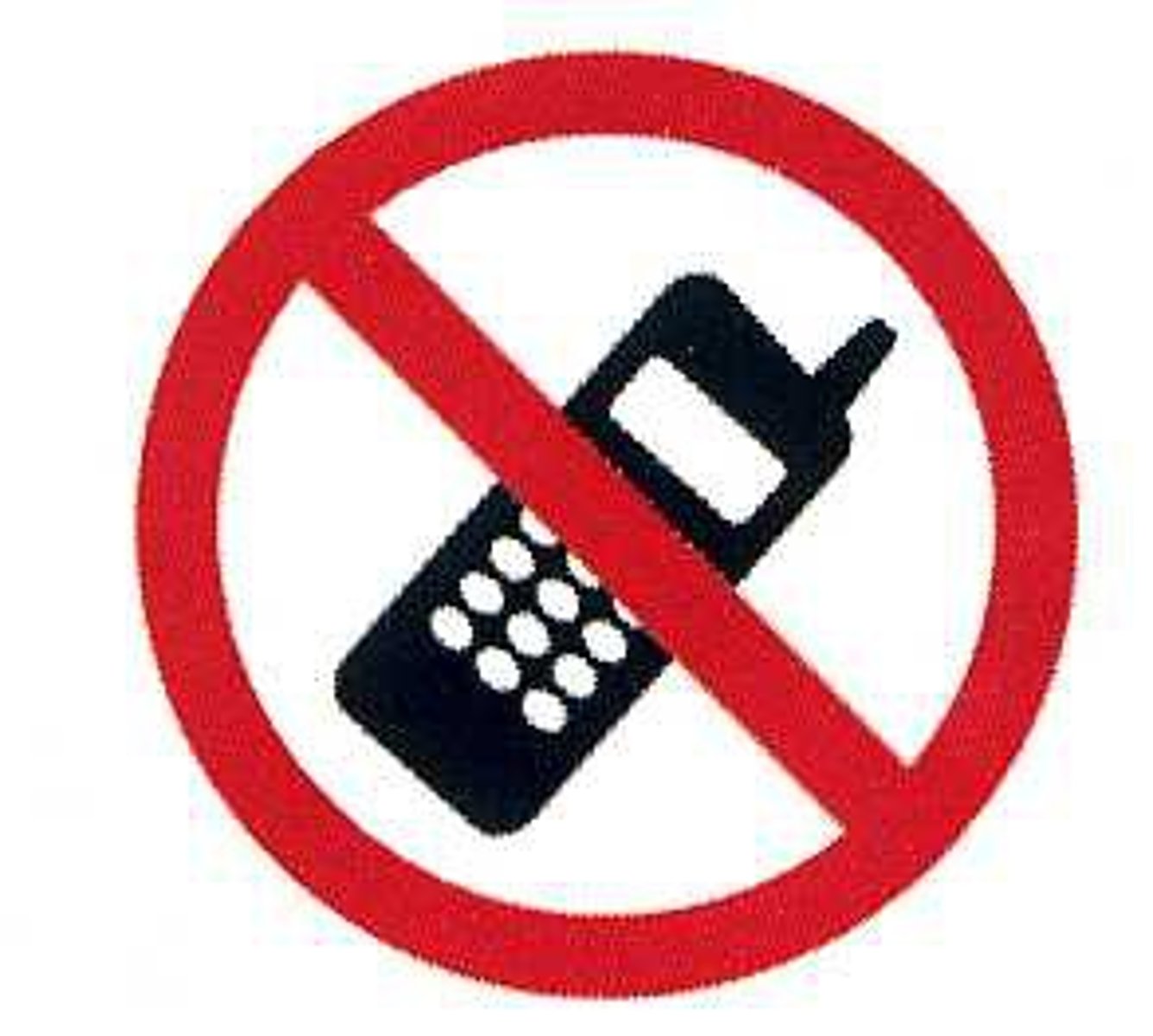
negative reinforcement
The removal of an unpleasant stimulus to increase the likelihood of a behavior being repeated. For example, fastening a seatbelt to stop the car's seatbelt alarm.
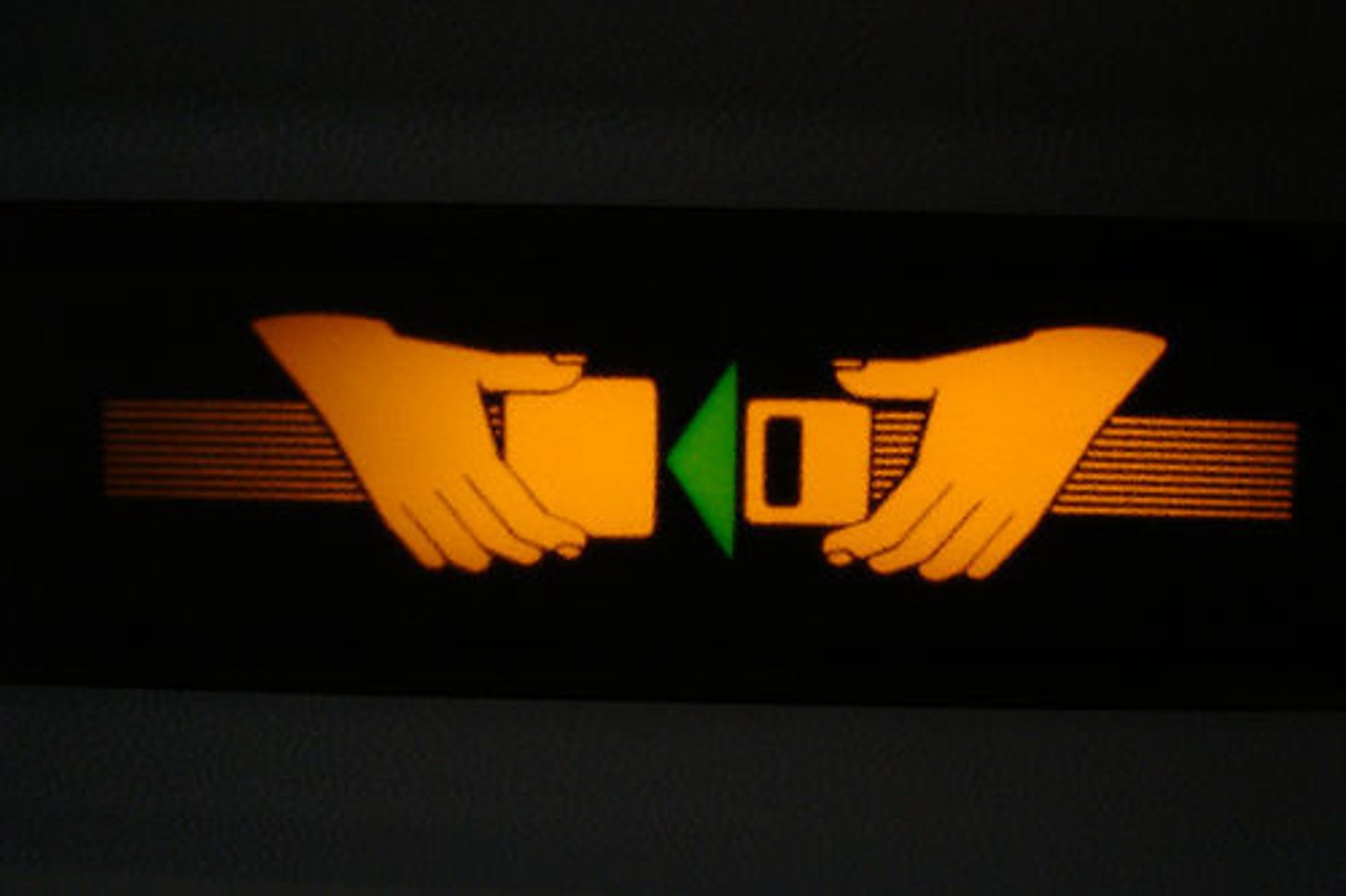
Operant Chamber (Skinner Box)
A laboratory apparatus used to study animal behavior in operant conditioning. For example, a rat presses a lever to receive food in a Skinner box.
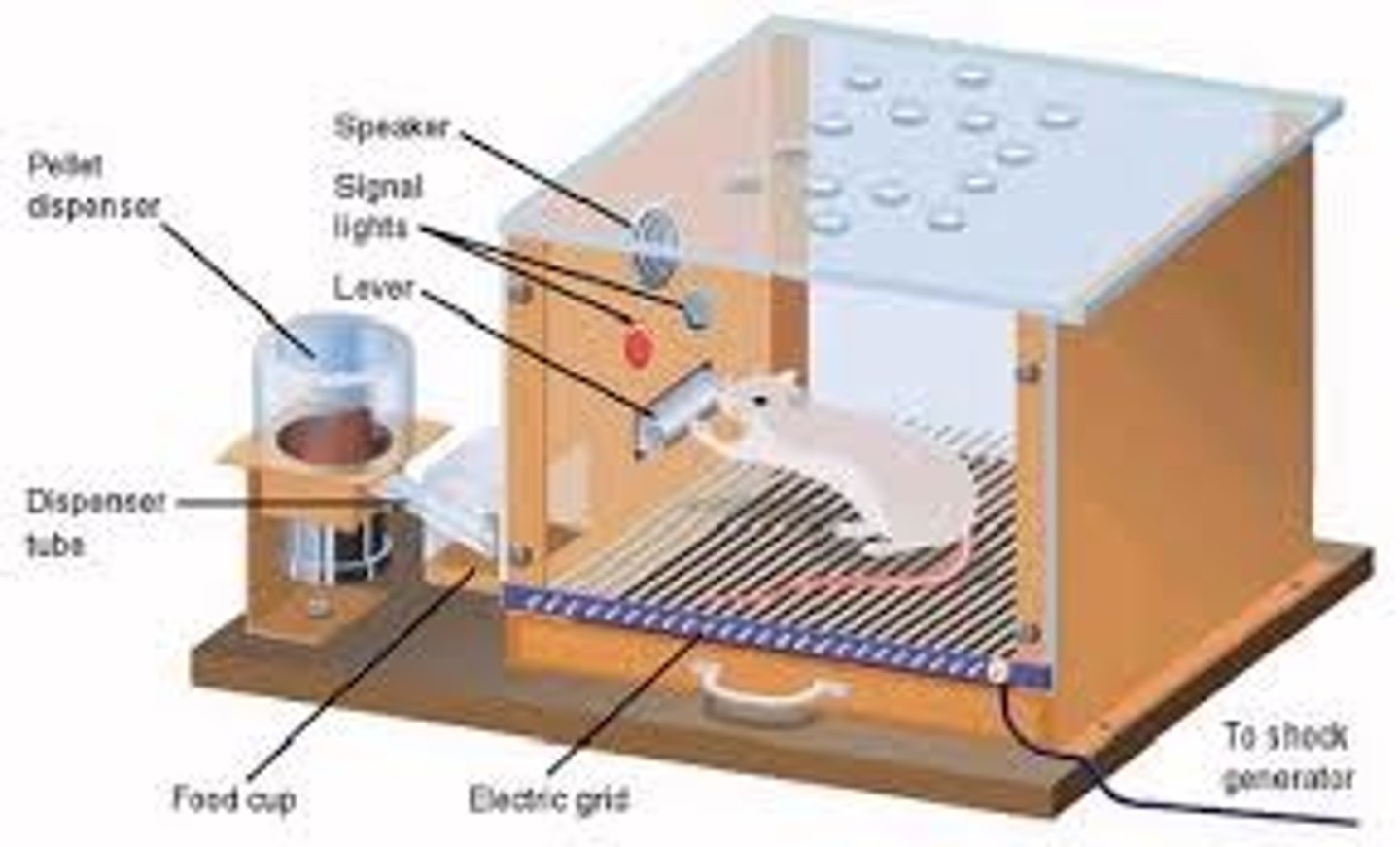
Operant Conditioning (Skinner)
A type of learning in which behavior is strengthened if followed by a reinforcer or diminished if followed by a punisher. For example, a student studies hard to receive good grades, which reinforces their studying behavior.
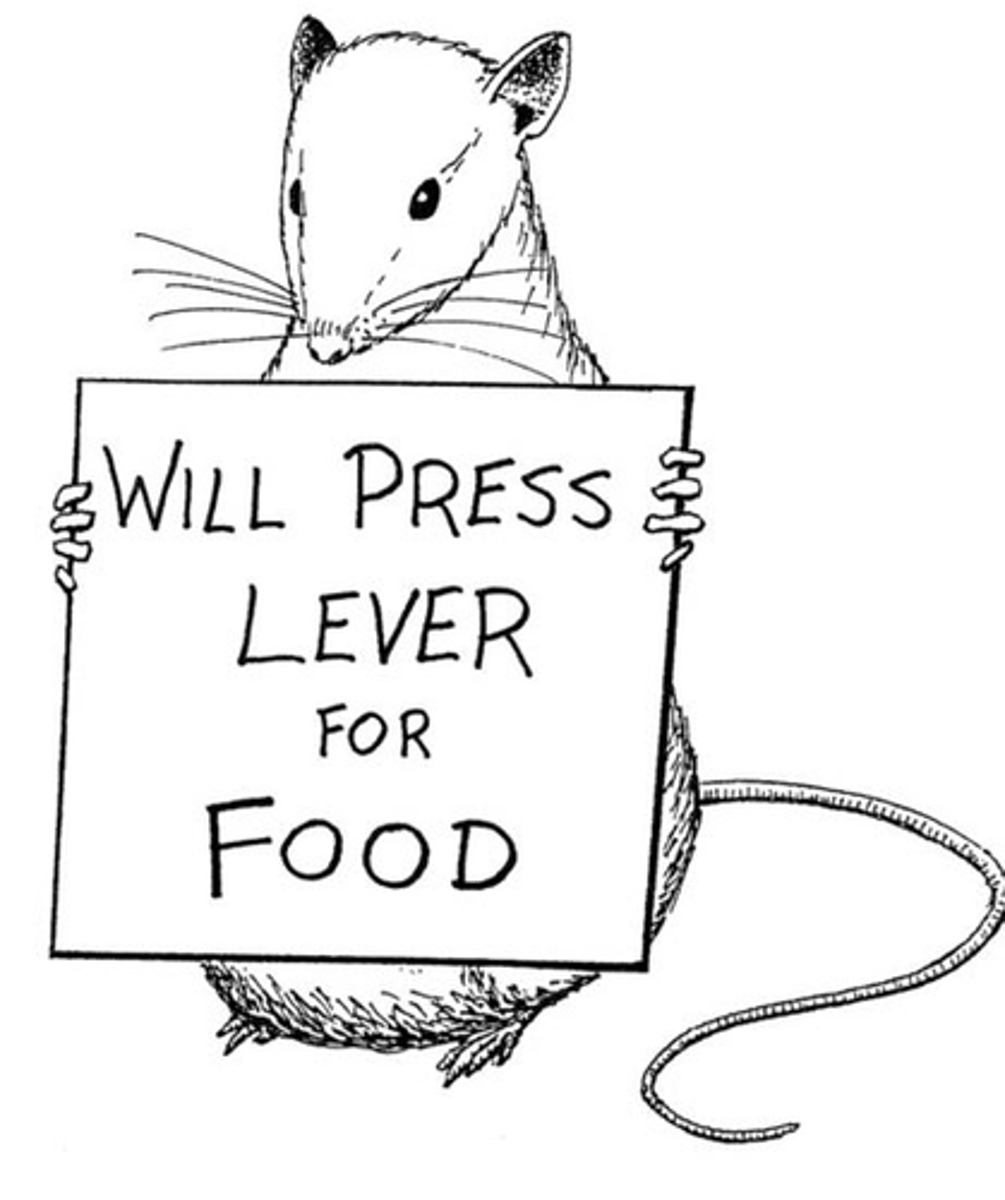
overjustification effect
The phenomenon in which external rewards can undermine the intrinsic satisfaction of performing a behavior. For example, a child who loves drawing may lose interest if they start receiving rewards for drawing.
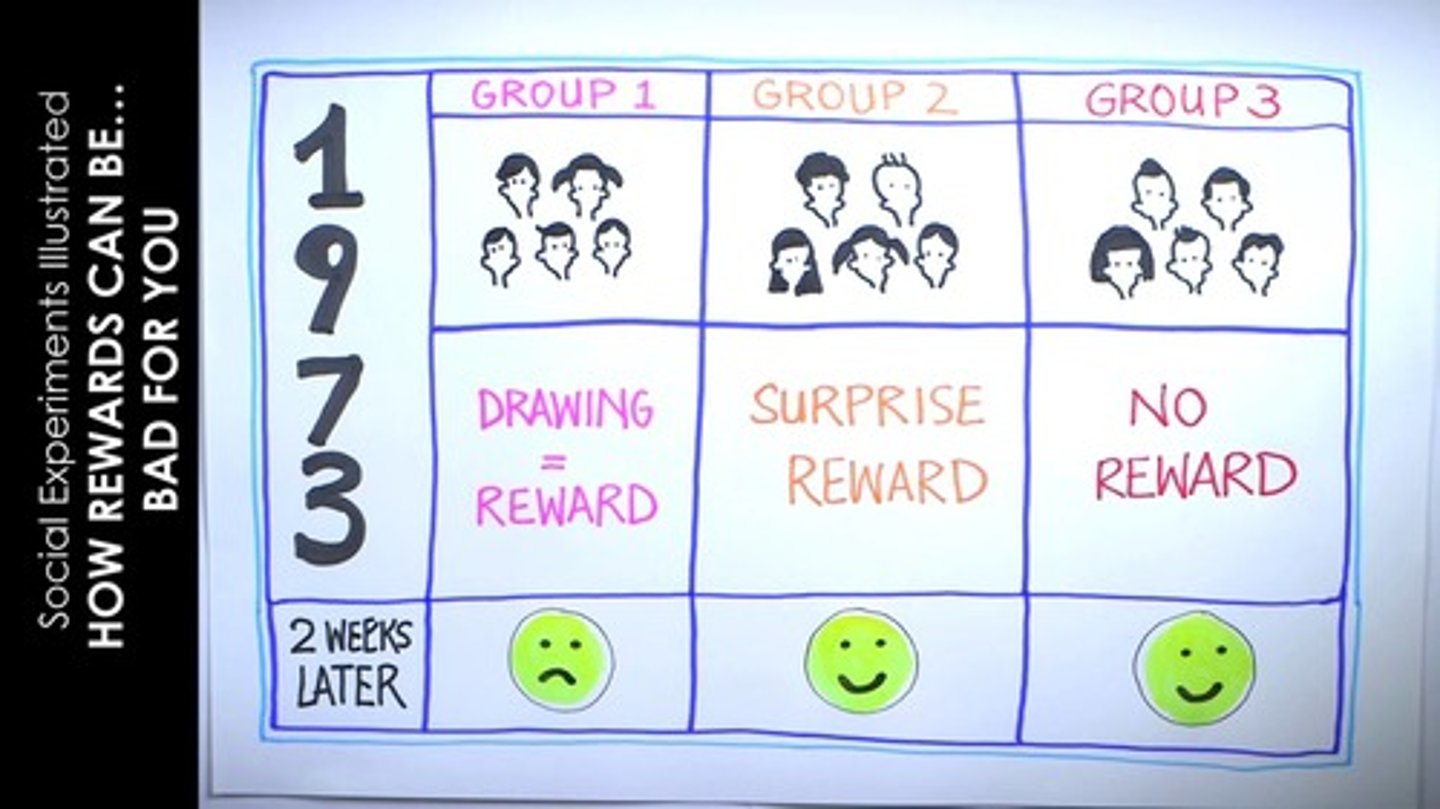
partial (intermittent) reinforcement schedule
Reinforcing a response only part of the time; results in slower acquisition but greater resistance to extinction. For example, gambling on a slot machine where wins are not guaranteed every time.
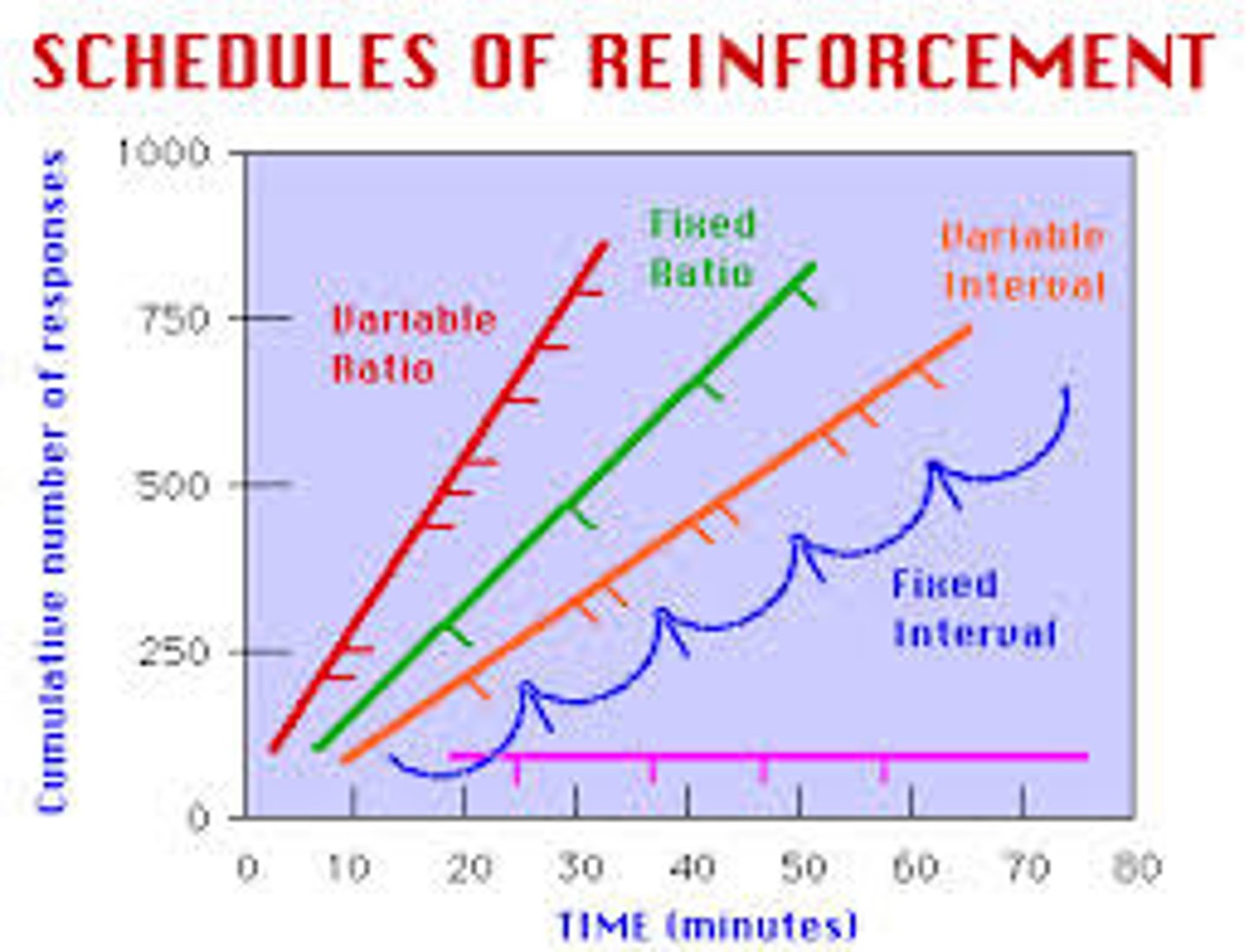
positive punishment
The addition of a stimulus to decrease the probability of a behavior's recurring. For example, scolding a dog for chewing on shoes to stop the behavior.
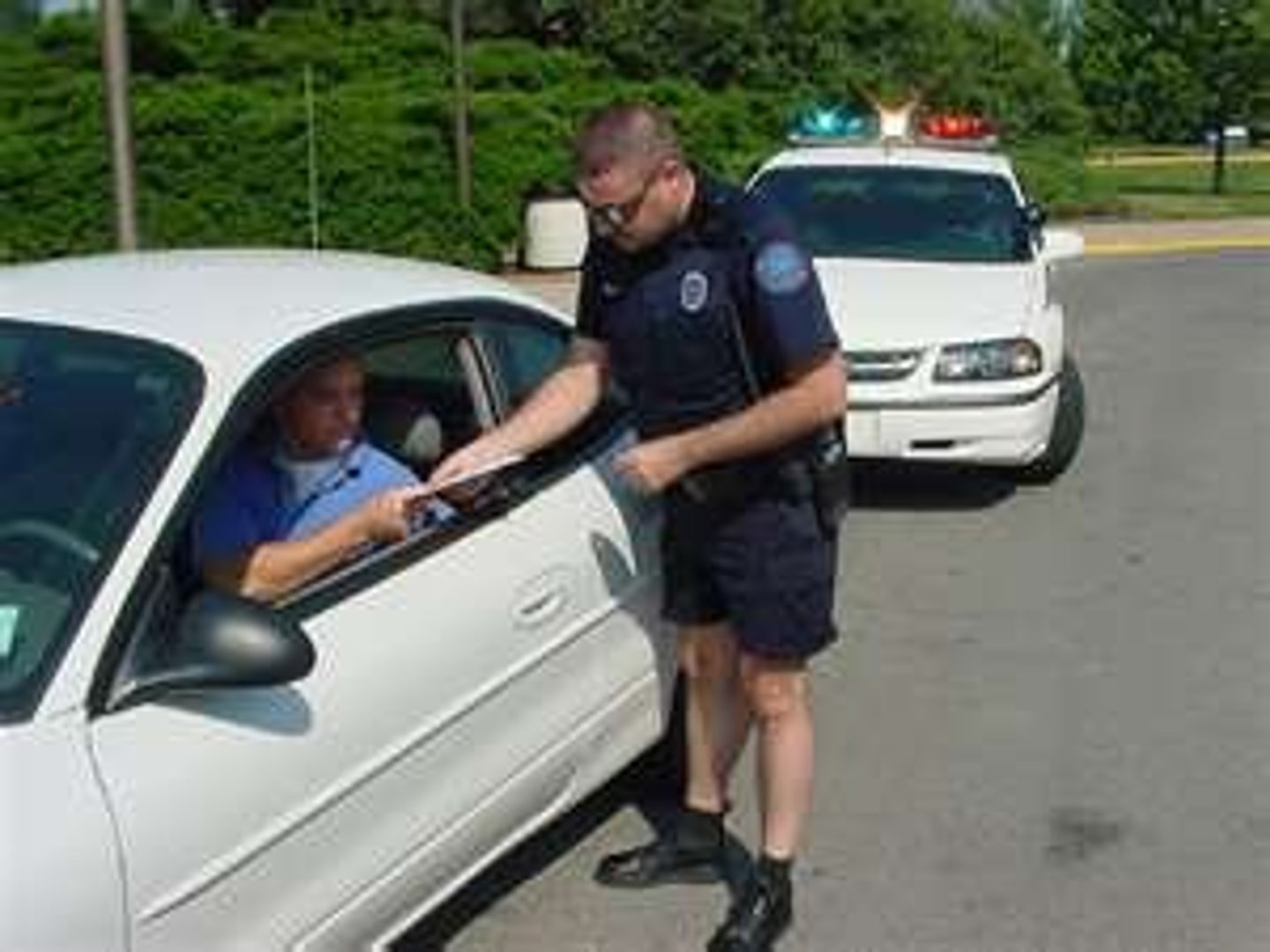
positive reinforcement
The addition of a stimulus to increase the probability of a behavior's recurring. For example, giving a dog a treat for sitting on command.
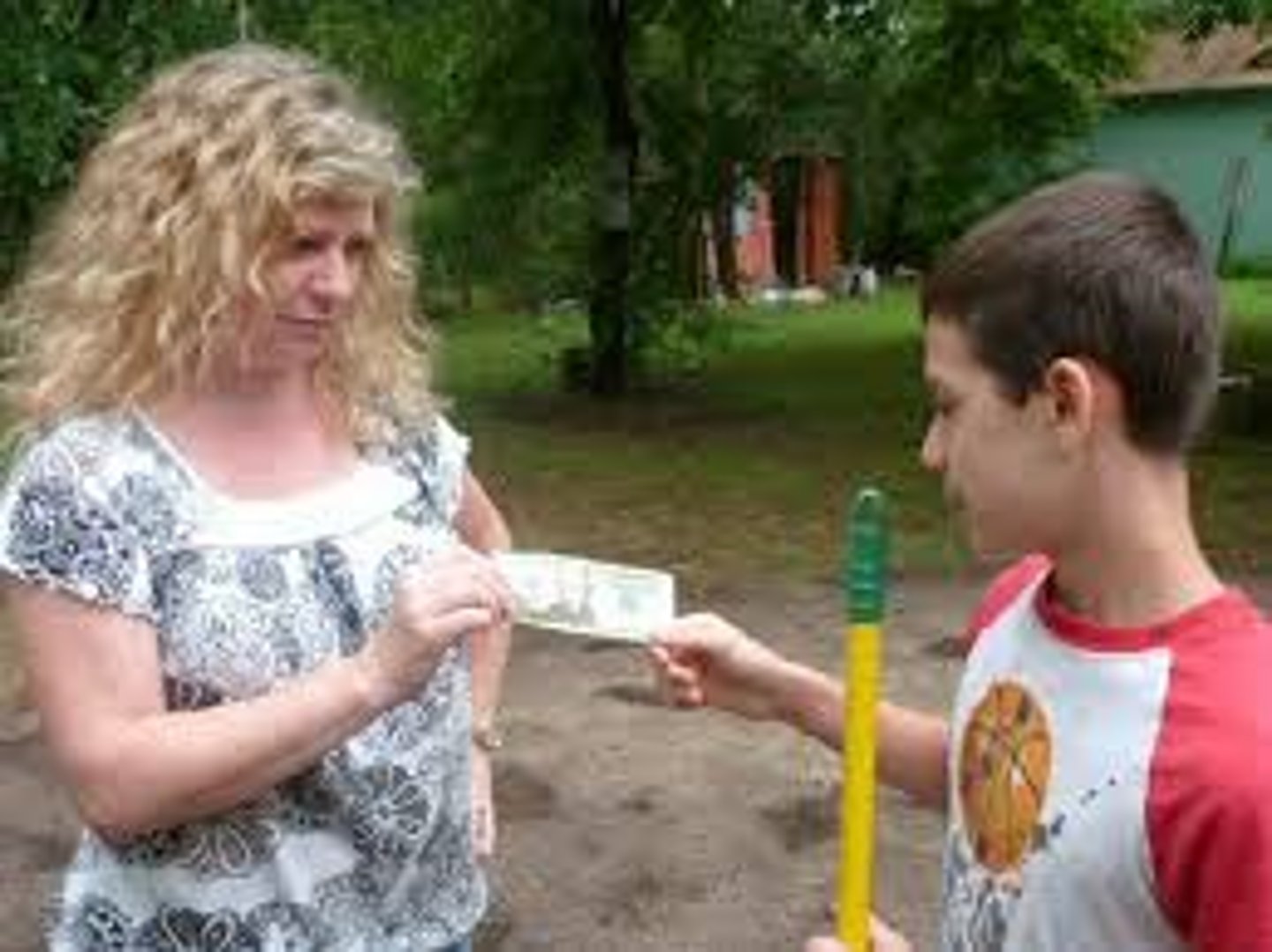
Premack Principle (Grandma's Rule)
The idea that more probable behaviors can be used as reinforcers for less probable behaviors. For example, a child might be allowed to play video games (high probability behavior) if they complete their homework first (low probability behavior).

primary reinforcer
An innately reinforcing stimulus, such as one that satisfies a biological need. For example, food or water.
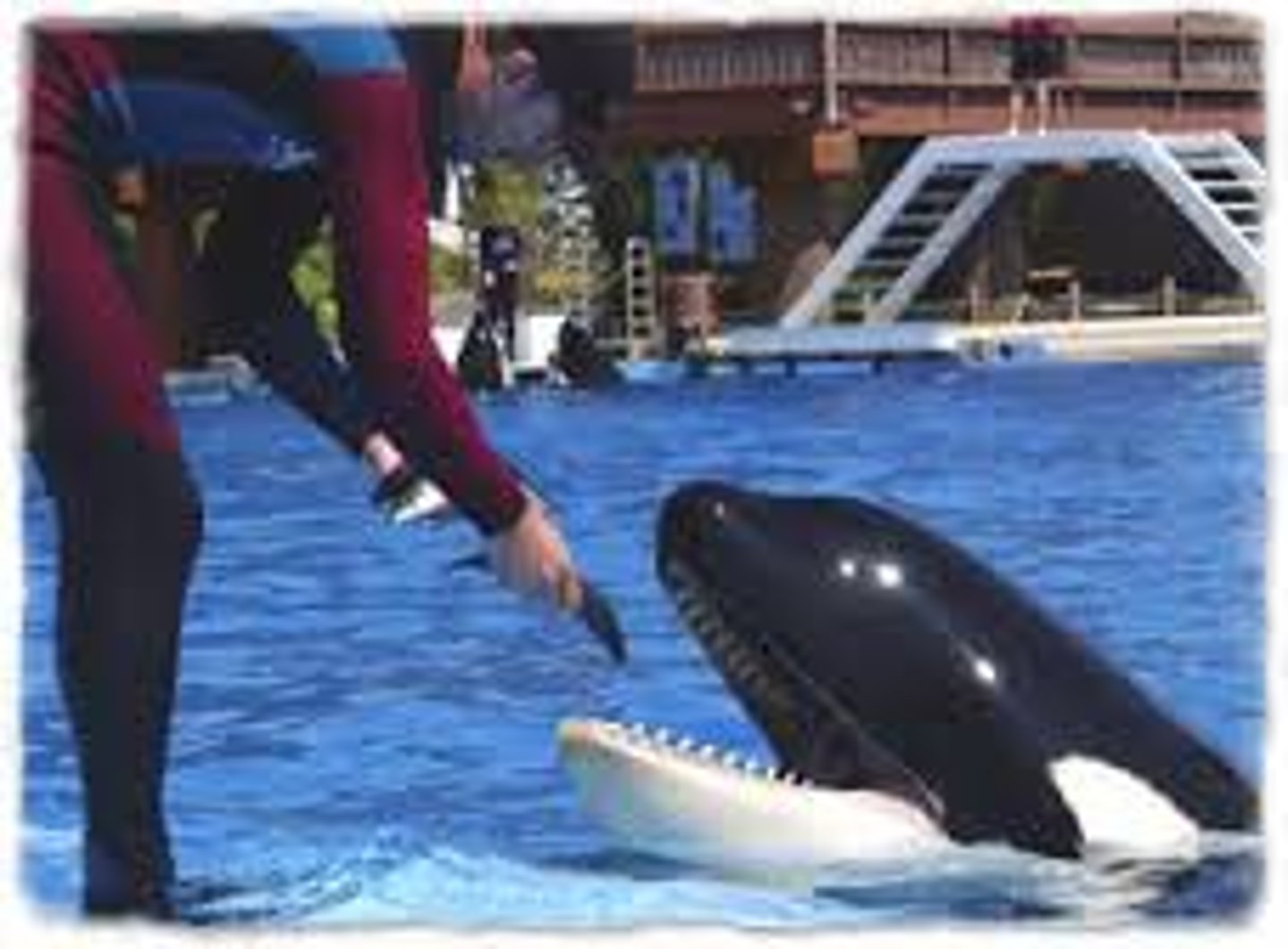
Reinforcement Schedules
Rules that determine how and when a response will be followed by a reinforcer. For example, a fixed-ratio schedule might reward a behavior after a set number of responses.

secondary reinforcer (conditioned reinforcer)
A stimulus that gains its reinforcing power through its association with a primary reinforcer. For example, money, which can be used to buy food or other primary reinforcers.
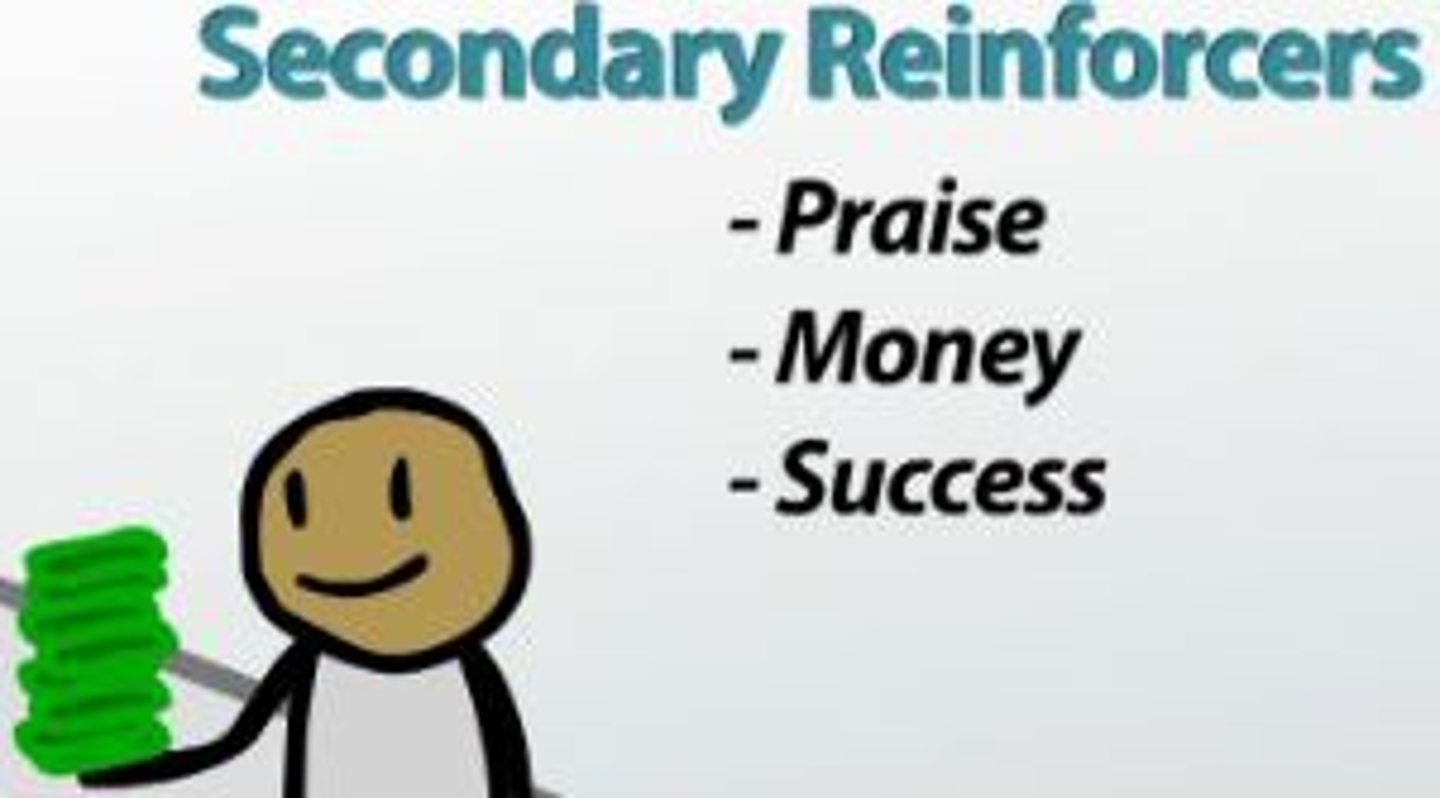
shaping (operant conditioning)
Gradually guiding behavior toward closer and closer approximations of the desired behavior. For example, training a dog to fetch by rewarding it for progressively getting closer to the correct action.
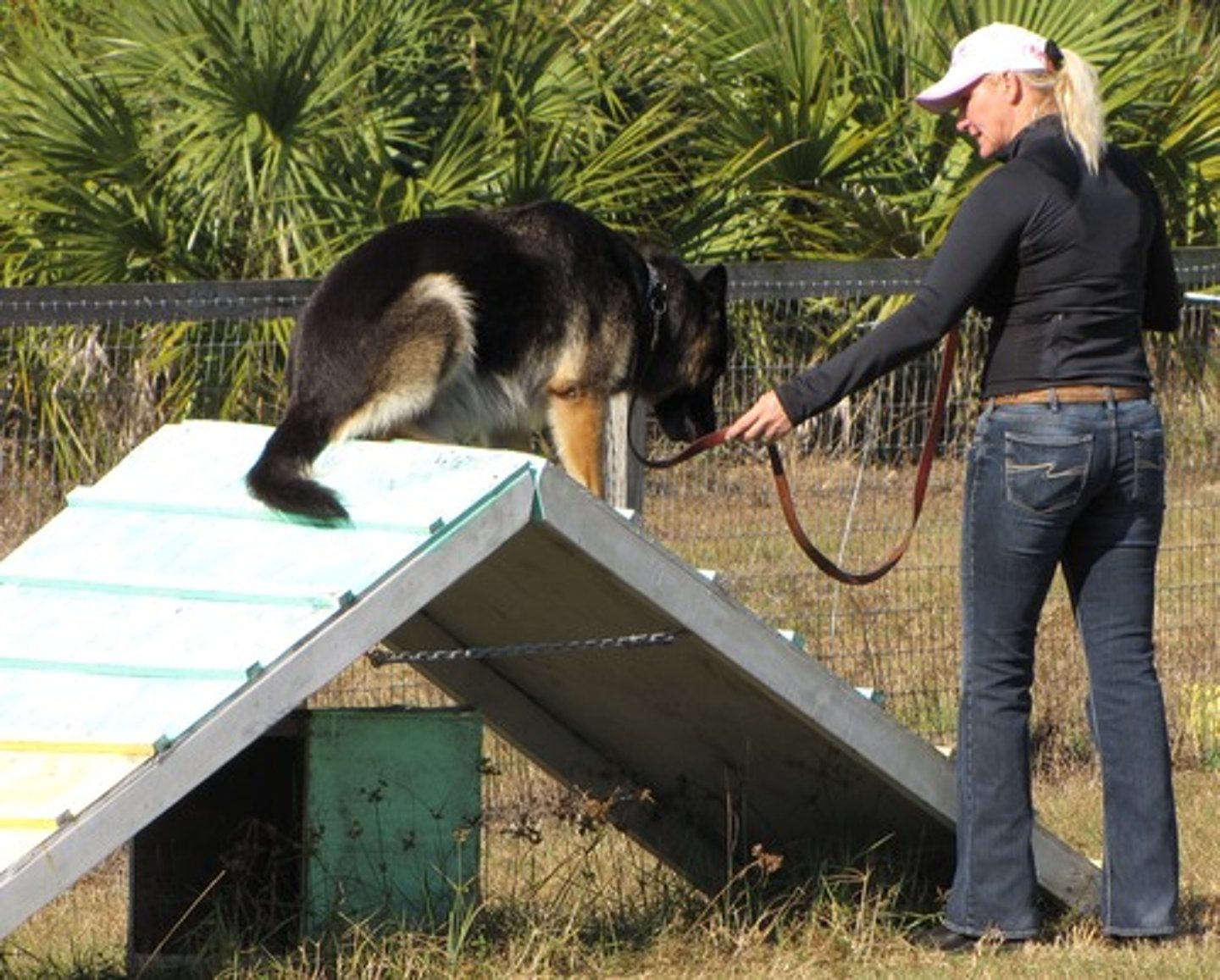
superstitious behavior
Behavior that is accidentally reinforced by a coincidental reward. For example, a baseball player might wear the same socks for every game believing they bring good luck.
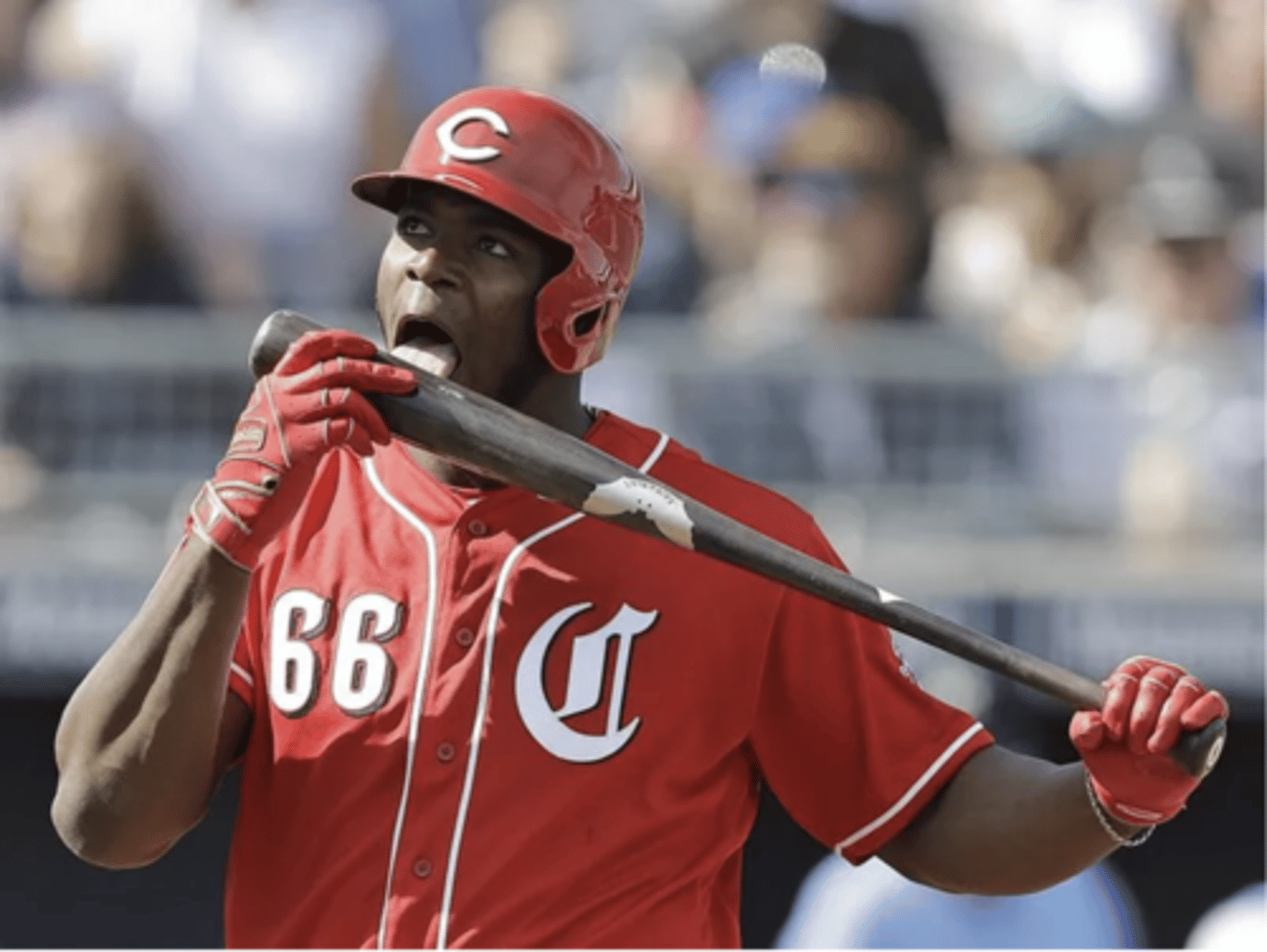
token economy
A system in which desired behaviors are reinforced with tokens that can later be exchanged for rewards. For example, students earn tokens for good behavior that can be exchanged for extra recess time.
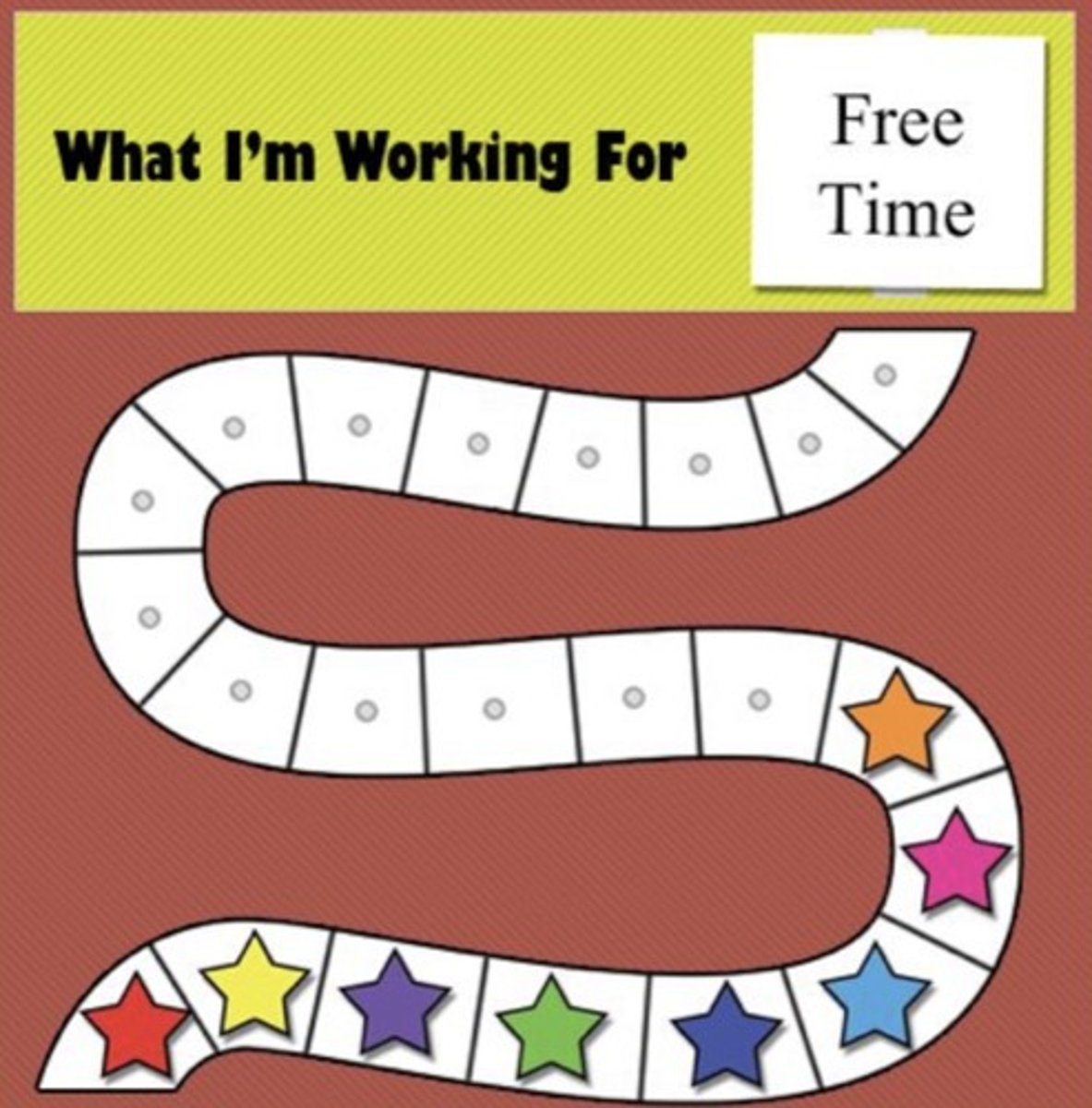
variable-interval schedule
A reinforcement schedule that rewards a response at unpredictable time intervals. For example, checking your phone for a text message when messages arrive at unpredictable times.

variable-ratio schedule
A reinforcement schedule that rewards an unpredictable number of correct responses. For example, gambling on a slot machine where a win might come after any number of lever pulls.
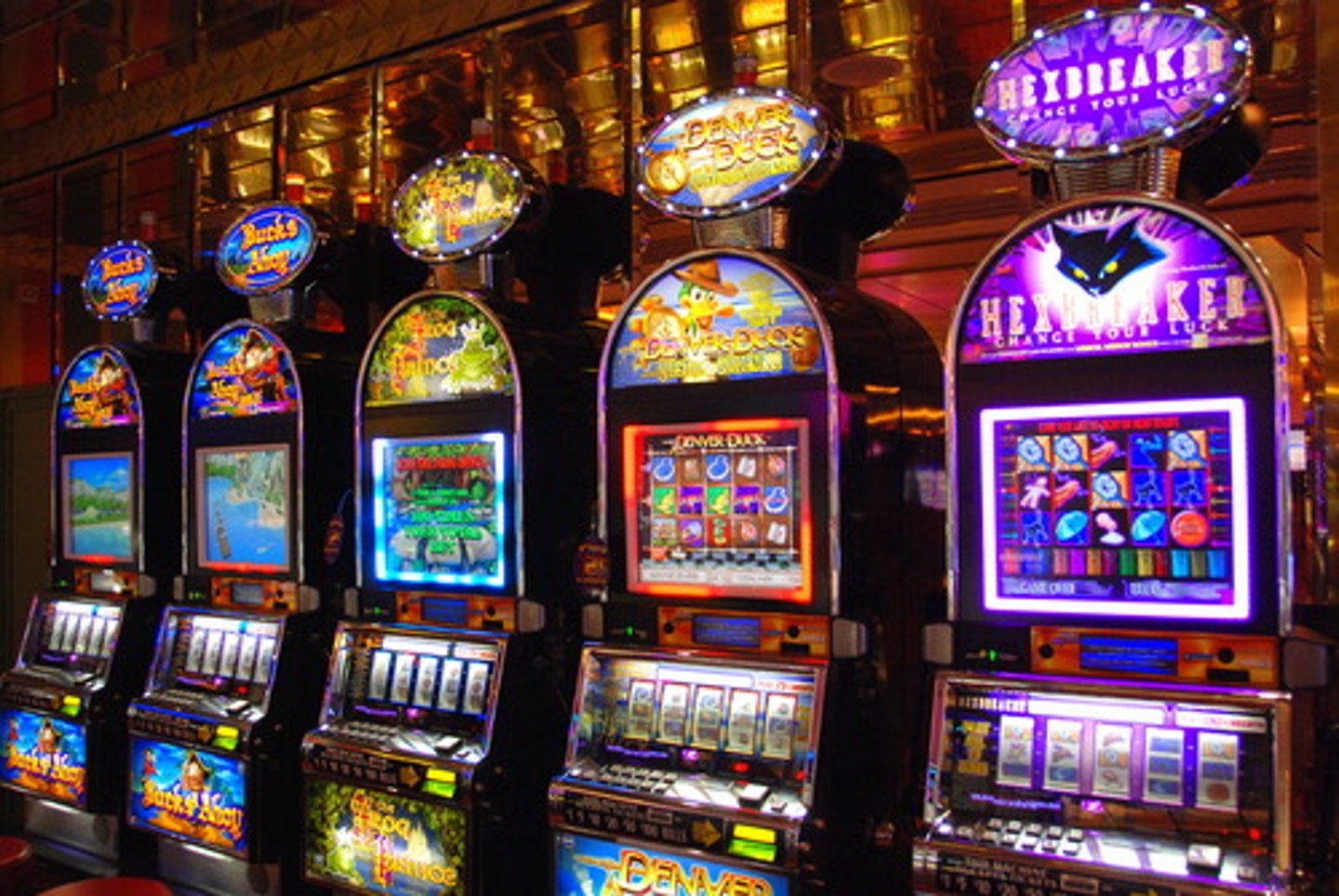
Albert Bandura
A psychologist who developed the Social Learning Theory, emphasizing the role of observational learning, imitation, and modeling. For instance, children who observe an adult behaving aggressively may later imitate that behavior.
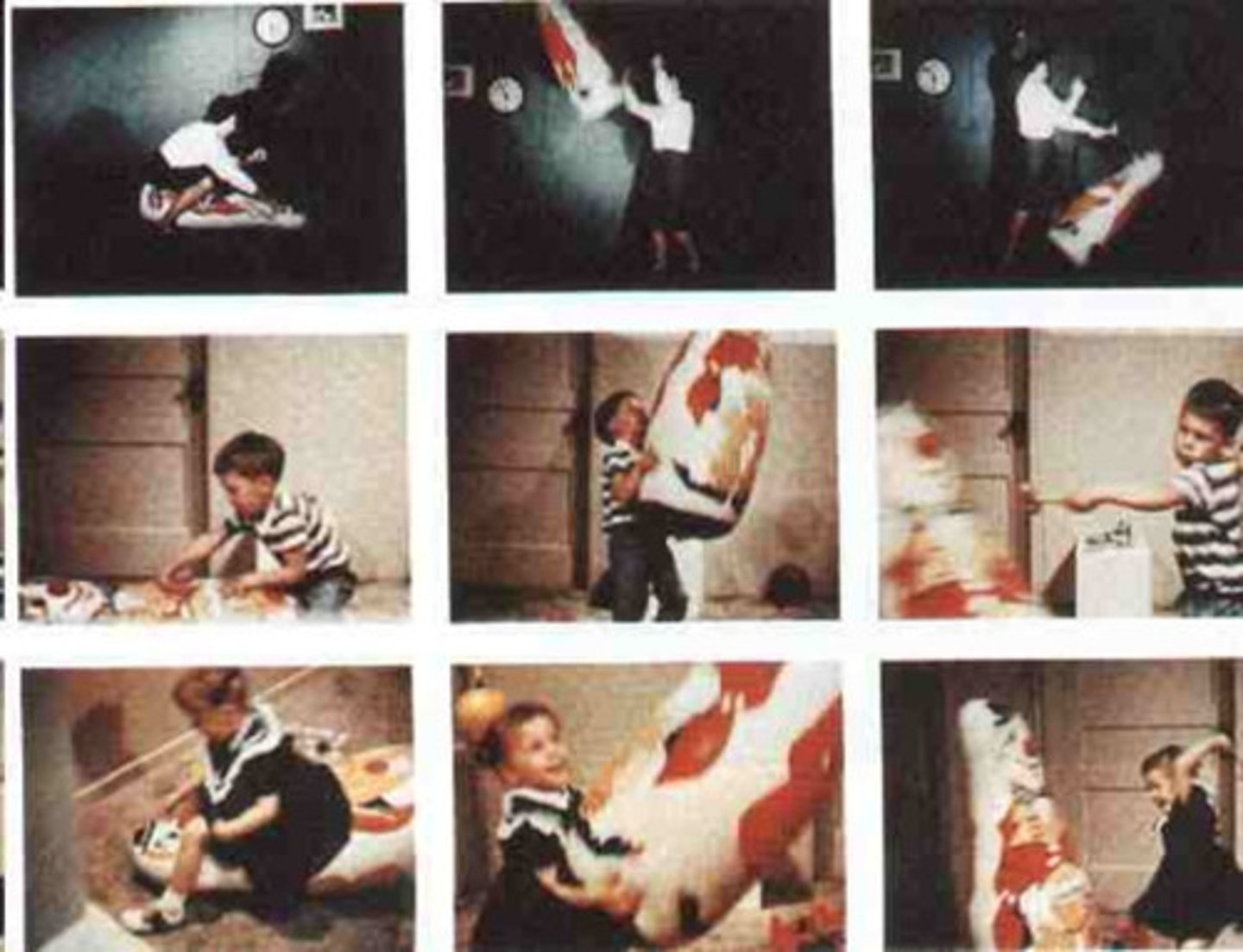
cognitive map
A mental representation of the layout of one's environment. For example, after exploring a maze, a rat acts as if it has learned a cognitive map of it and can navigate it to find food.

insight learning
A sudden realization of a problem's solution without repeated trial-and-error behavior. For example, a chimp suddenly realizes how to reach a banana by stacking boxes, without previously attempting that specific action.

latent learning
Learning that occurs but is not apparent until there is an incentive to demonstrate it. For example, rats may learn the layout of a maze without a reward but will navigate it quickly when food is placed at the end.
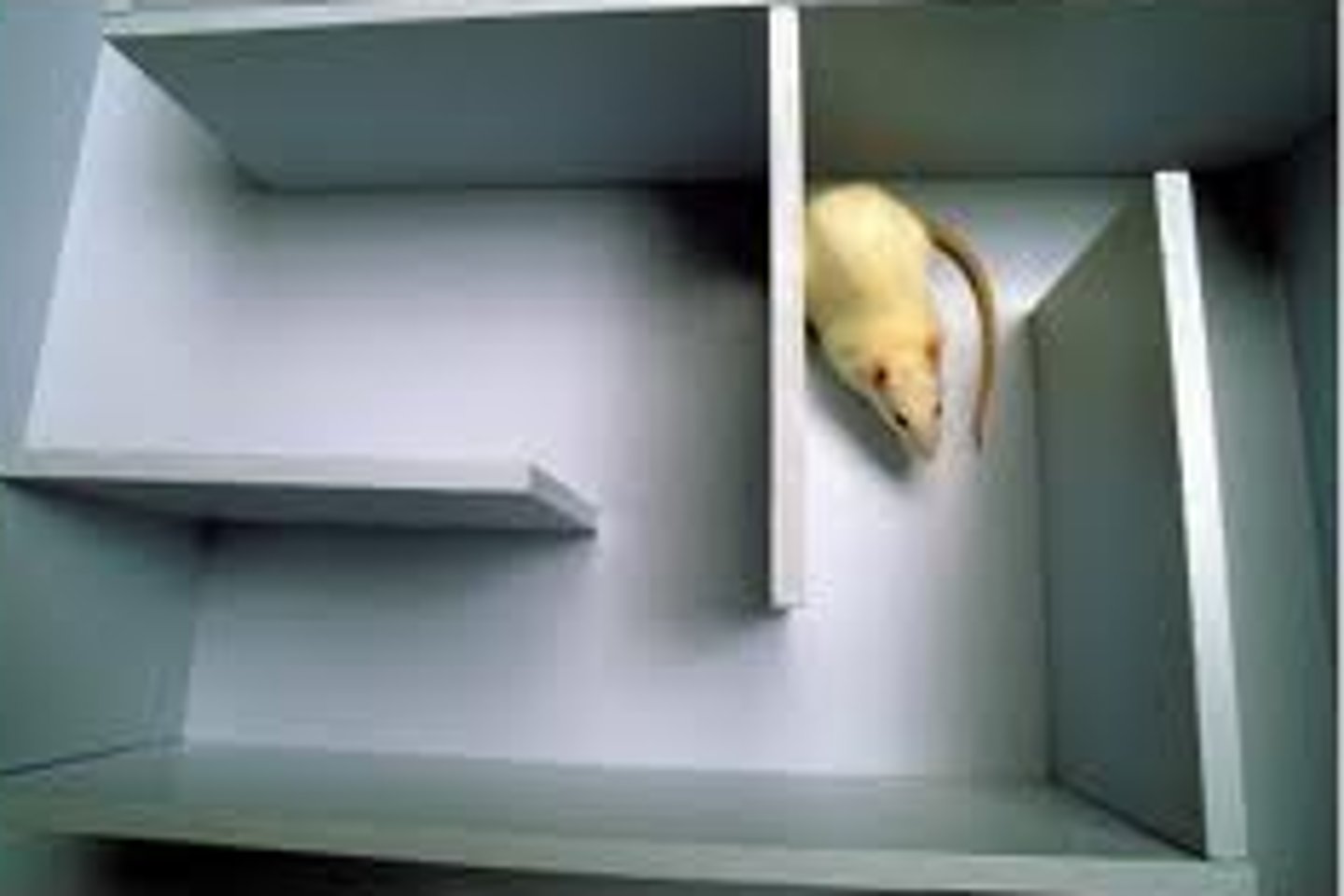
Modeling
The process of observing and imitating a specific behavior. For example, a child learns to tie their shoes by watching a parent demonstrate the steps.

observational learning
Learning by observing others; also known as social learning. For example, a child learns to be polite by watching their parents' courteous behavior.

social learning theory
Bandura's theory that we learn social behavior by observing and imitating others and by being rewarded or punished. For example, children who observe a model being rewarded for aggressive behavior are more likely to imitate that behavior.

vicarious reinforcement
The process of learning behaviors through the observation of rewards and punishments received by others. For example, a student might decide to study hard after observing a classmate receiving praise for good grades.
